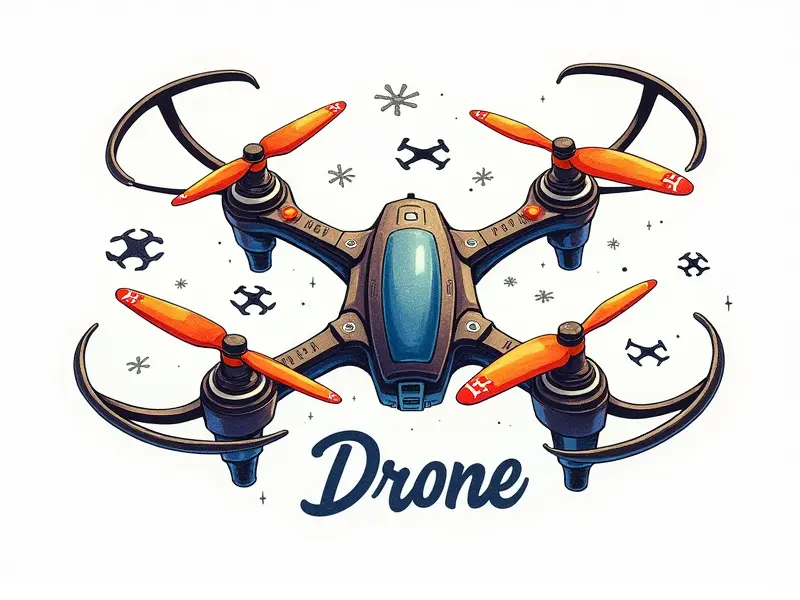Walkera drone controller range?

Walkera Drone Controller Range: Tips and Tricks
When it comes to drone technology, range is a crucial factor for enthusiasts and professionals alike. Walkera drones are renowned for their reliability and performance, but how far can you fly with them? This article delves into the specifics of Walkera drone controller ranges, offering insights on best practices and techniques to maximize your flying distance.
How Far Can You Fly with Walkera Drones?
The range of a Walkera drone depends largely on its model. For instance, the Walkera DEERC T18G offers an impressive line-of-sight range of up to 7 kilometers (4.3 miles) under optimal conditions. However, most consumer-grade Walkera drones typically have a range between 2 and 5 kilometers.
Max Distance for Walkera Drone Controllers
The maximum distance you can fly your Walkera drone is influenced by several factors including the controller's power source, environmental interference, and signal strength. Generally, Walkera controllers are designed to maintain a strong connection up to their specified range limits.
Best Practices for Walkera Controller Range
- Keep Obstacles Clear: Ensure there are no obstructions between the drone and controller.
- Maintain Line-of-Sight: Keep visual contact with your drone to avoid signal loss.
- Choose Open Areas: Fly in open spaces free from buildings, trees, or other potential interference sources.
Enhancing Range on Walkera Drone Controllers
To extend the range of your Walkera drone controller, consider implementing these strategies:
- Upgrade Antennas: Use high-gain antennas to boost signal strength and coverage.
- Use Repeater Modules: Install repeater modules to relay signals over longer distances.
- Optimize Power Supply: Ensure your controller has a stable power source, such as using external batteries.
Boosting Range for Walkera Drone Controllers
In addition to hardware upgrades, software optimizations can also enhance the range of your Walkera drone. Regular firmware updates and calibration procedures are essential:
- Firmware Updates: Keep your controller's firmware up-to-date for improved performance.
- Calibration Procedures: Perform regular calibration to ensure optimal signal transmission.
Understanding Walkera's Drone Control Distance
The control distance of a Walkera drone is determined by the quality and type of communication protocol used. Most Walkera drones utilize 2.4GHz or 5.8GHz frequency bands for reliable, long-range connectivity.
Tips to Extend the Range of Your Walkera Drone
Here are some additional tips to help you get the most out of your Walkera drone's range:
- Select Optimal Frequency Band: Use a frequency band that minimizes interference from other devices.
- Avoid Interference Sources: Stay away from Wi-Fi networks, cell towers, and other electronic devices.
Optimal Flying Distance with Walkera Drones
To achieve the optimal flying distance with your Walkera drone, it's important to understand its limitations and capabilities. Always adhere to manufacturer guidelines for safe operation:
- Follow Manufacturer Guidelines: Stick to recommended distances and conditions.
- Test Range in Controlled Environments: Before venturing into long-range flights, test the drone's range in a controlled environment.
Walkera RC Range: Tips and Tricks
Here are some advanced tips to further enhance your Walkera drone controller’s range:
- Use Antenna Extensions: Extend the antenna length for better signal reception.
- Implement Signal Boosters: Utilize external signal boosters to amplify weak signals.
Walkera Controller Performance at Long Distances
Flying your Walkera drone at long distances requires careful planning and execution. Ensure you have the necessary equipment and knowledge to handle extended range flights safely:
- Carry Backup Batteries: Bring extra batteries for both the controller and drone.
- Monitor Battery Levels: Keep an eye on battery levels throughout your flight.
Walkera Controller Range Limitations
While Walkera drones offer impressive range capabilities, there are inherent limitations to consider. Environmental factors such as weather conditions and terrain can significantly impact performance:
- Weather Conditions: Windy or rainy days may reduce the effective range of your drone.
- Terrain Challenges: Flying over hilly or mountainous areas can limit line-of-sight communication.
Conclusion
Making the most out of your Walkera drone’s controller range involves understanding its capabilities and limitations, as well as implementing best practices to enhance performance. By following these tips and tricks, you'll be able to extend the range of your Walkera drone for longer, more enjoyable flights.

